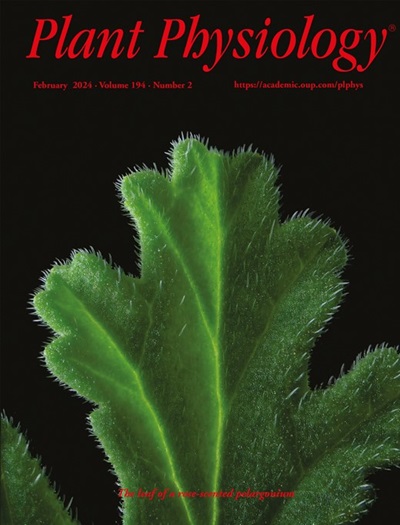Clathrin-mediated trafficking regulates copper tolerance by modulating the localization of HEAVY METAL ATPase 5 in Arabidopsis root cells
IF 6.5
1区 生物学
Q1 PLANT SCIENCES
引用次数: 0
Abstract
Plant clathrin and its adaptor protein complexes—adaptor protein complex-1 (AP-1) at the trans-Golgi network/early endosome (TGN/EE) and the adaptor protein complex-2 (AP-2) at the plasma membrane (PM)—function in clathrin-mediated trafficking (CMT). This study reports the role of CMT in regulating copper (Cu) tolerance in plants. We found that high concentrations of exogenous Cu treatment increase the abundance of clathrin and adaptor protein complexes at the TGN/EE and/or the PM. We further found that a CMT-deficient mutants ap2μ2, clc2 clc3 exhibits hypersensitivity to Cu stress, similar to a mutant lacking the Cu transporter HEAVY METAL ATPase 5 (HMA5). As previously reported, HMA5 relocates from the endoplasmic reticulum (ER) to the PM on the soil side, where it excretes excess Cu from the root cell, which is crucial for Cu tolerance. Our protein interaction assays showed that the AP-1 and AP-2 σ subunits depend on the YXXΦ sorting motif of HMA5 for recognition. Defective AP-1 hinders HMA5 translocation to the PM after its transfer from the ER to the TGN/EE following Cu stress, while impaired AP-2 function inhibits HMA5 endocytosis at the PM. These results demonstrate that CMT mediates the endocytic recycling of HMA5 between the TGN/EE and the PM, thereby regulating Cu efflux from root cells. Our findings highlight a function of CMT in maintaining Cu homeostasis.网格蛋白介导的转运通过调节拟南芥根细胞中重金属atp酶5的定位来调节铜耐受性
植物网格蛋白及其适配蛋白复合物——位于反式高尔基网络/早期核内体(TGN/EE)的适配蛋白复合物-1 (AP-1)和位于质膜(PM)的适配蛋白复合物-2 (AP-2)在网格蛋白介导的转运(CMT)中起作用。本研究报道了CMT在调节植物对铜(Cu)耐性中的作用。我们发现高浓度的外源Cu处理增加了TGN/EE和/或PM处网格蛋白和接头蛋白复合物的丰度。我们进一步发现,缺乏cmt的突变体ap2μ2, clc2 clc3对Cu胁迫表现出超敏性,类似于缺乏Cu转运体重金属atp酶5 (HMA5)的突变体。如前所述,HMA5从内质网(ER)迁移到土壤侧的PM,在那里它从根细胞中排泄多余的铜,这对铜耐受性至关重要。我们的蛋白相互作用分析表明,AP-1和AP-2 σ亚基依赖于HMA5的YXXΦ分类基序进行识别。AP-1缺陷阻碍HMA5在Cu胁迫下从内质网转移到TGN/EE后向PM转运,而AP-2功能受损则抑制HMA5在PM的内吞作用。这些结果表明,CMT介导了TGN/EE和PM之间HMA5的内吞循环,从而调节了根细胞的Cu外排。我们的发现强调了CMT在维持Cu稳态中的作用。
本文章由计算机程序翻译,如有差异,请以英文原文为准。
求助全文
约1分钟内获得全文
求助全文
来源期刊

Plant Physiology
生物-植物科学
CiteScore
12.20
自引率
5.40%
发文量
535
审稿时长
2.3 months
期刊介绍:
Plant Physiology® is a distinguished and highly respected journal with a rich history dating back to its establishment in 1926. It stands as a leading international publication in the field of plant biology, covering a comprehensive range of topics from the molecular and structural aspects of plant life to systems biology and ecophysiology. Recognized as the most highly cited journal in plant sciences, Plant Physiology® is a testament to its commitment to excellence and the dissemination of groundbreaking research.
As the official publication of the American Society of Plant Biologists, Plant Physiology® upholds rigorous peer-review standards, ensuring that the scientific community receives the highest quality research. The journal releases 12 issues annually, providing a steady stream of new findings and insights to its readership.
 求助内容:
求助内容: 应助结果提醒方式:
应助结果提醒方式:


